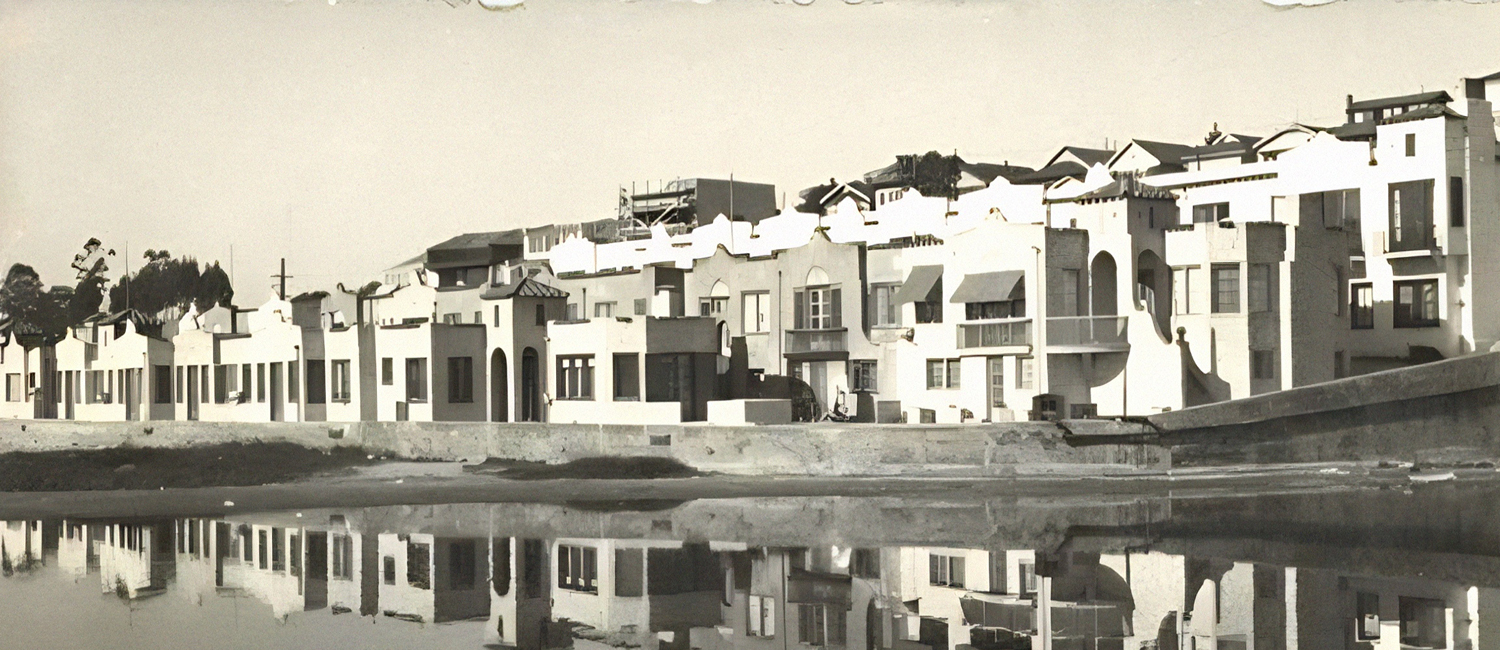The Capitola Venetian Court, a distinguished landmark erected in 1925, stands as a testament to the rich history of Capitola and its evolution into a seaside resort community. Nestled between the Stockton Avenue Bridge and the Capitola Wharf, this architectural gem forms the Venetian Court Historic District, a unified residential development exuding a Mediterranean charm.
The Venetian Court boasts 24 townhouses, a 17-unit vacation rental, and an adjacent vacation rental office. Over the years, the vacation rental has also added one of the duplex/townhomes (Units 12 & 13), a managers unit and an adjacent parking lot to it's campus.
Comprising a three-tier, five-structure complex with walkways and a low sea wall providing beach access, the Venetian Court architectural finesse is characterized by flat roofs, parapet walls, decorative roof tiles, and Venetian detailing, reflecting the 1920s Spanish Colonial Revival-Mediterranean design. Despite minor alterations like window replacements and remodeling, the property retains its original appearance, adding to its historical significance.
The roots of the Venetian Court are intertwined with the broader history of Capitola. Established in 1869 as California's first seaside resort community, Camp Capitola saw transformative changes when oil millionaire Henry Allen Rispin envisioned a second Venice. Rispin's subdivision and land sales led to the creation of the Venetian Court Apartments in 1924 at the foot of the Capitola Wharf, marking the transition from a summer resort to a year-round community.
Challenges, such as storm damage in 1926, tested the resilience of the Venetian Court. However, the complex's architectural integrity persevered, becoming a defining feature of Capitola's landscape. Notably, the Venetian Court was a pioneering condominium development, with the first attached unit sold in 1925. The architects, Wolfe and Higgins of San Jose, contributed to the City's early Spanish Colonial Revival-Mediterranean architectural examples.
As the Glenwood Highway opened in 1923, linking San Jose to coastal Santa Cruz County, the Venetian Court benefited from increased weekend traffic. The complex quickly sold out its units, and in 1926, it witnessed the emergence of the Venetian Court Vacation Rental, capitalizing on the growing trend of tourists exploring the coastal highway. Frank T. Blake, an original apartment buyer, converted street-side units into the first vacation rental, creating a landmark that may be the oldest continuously operating vacation rental in the state.
However, the story of the Venetian Court extends beyond its structures. The confusion between privately owned residences and the vacation rental often revolves around the parking lot. Contrary to misconception, the parking lot is not part of the Venetian Court or the historic registry. Initially considered for additional units, it now serves as a practical solution for the vacation rental. This clarification dispels any ambiguity and enhances the understanding of the distinct entities within the Venetian Court complex.
Despite initial skepticism that "it won't last," the Venetian Court has stood the test of time, surviving over 100 years and contributing to the contemporary allure of Capitola. Today, it remains a living heritage, embodying the vision of its creators and offering a tangible connection to the past amid the ever-evolving landscape of this coastal haven.
